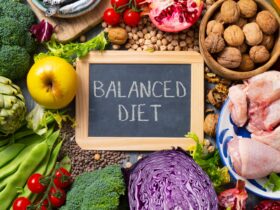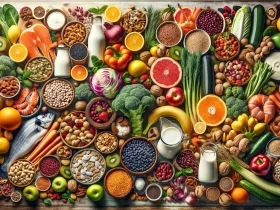If you’ve ever noticed that your jeans seem a little snug after a holiday season, or that your 20-year-old self could devour pizza at midnight without consequence while your 40-year-old self merely looks at a cupcake and feels it, you’ve already met your metabolism in action – or in slow-motion.
Your metabolism is the set of chemical processes in your body that converts the food you eat into the energy you need to breathe, think, move, and repair. It’s always running, even while you sleep. But here’s the catch: it doesn’t stay the same over your lifetime. Like your hairstyle choices, it tends to change with the seasons of your life.
The good news? While you can’t stop these natural shifts, you can work with them, giving your body the nourishment and habits it needs to thrive at every stage. Let’s walk through the key metabolic phases and explore how to make the most of them.
Your Teens and Early 20s: The Metabolic Fast Lane
Ah, youth – the time when your body seems to have endless energy, and your metabolism is humming along like a finely tuned sports car. Thanks to higher levels of growth hormones and naturally active lifestyles (hello, late-night dance sessions and spontaneous hikes), your resting metabolic rate is at its peak.
What to focus on now:
- Fuel wisely. Even if you can “get away” with eating ultra-processed snacks, this is the perfect time to build a foundation of healthy eating patterns. Think colourful vegetables, whole grains, lean proteins, and healthy fats.
- Don’t skimp on protein. It supports muscle mass, which in turn keeps your metabolism higher.
- Stay active for life. Habits formed now – such as engaging in regular workouts, walking instead of driving short distances, starting the day with a stretching session, or choosing the stairs over the escalator – are more likely to stick and protect your metabolism later.
Nutrition tip: Create a balanced plate with half vegetables, a quarter lean protein, and a quarter whole grains. That way, you’re fueling your body without overloading it.
Late 20s to 30s: Building and Balancing
By your late 20s, your metabolism may start to slow just a touch. Lifestyle factors – a busy career, less sleep, more sitting – can creep in and subtly affect how efficiently you burn energy. Hormones are generally stable, but stress levels can rise, which may nudge your body toward storing fat.
What to focus on now:
- Prioritise muscle. Strength training at least twice a week helps maintain lean body mass, which is your metabolism’s best friend.
- Mind your portions. Your calorie needs might not be quite as high as they were in your early 20s, even if your appetite hasn’t gotten the memo.
- Manage stress and sleep. Both can influence hunger hormones and metabolic health. Blocking out your valuable 7-9 hours of sleep really is vital for long-term health and wellbeing.
Nutrition tip: Incorporate magnesium-rich foods like leafy greens, nuts, and seeds to support muscle function, sleep quality, and stress resilience.
40s: The Metabolic Middle Ground
Many women start to notice changes in their 40s, sometimes even before menopause begins. Oestrogen levels may start to fluctuate, muscle mass naturally declines by about 3-8% per decade after 30, and if activity levels dip, that can lead to gradual weight gain.
What to focus on now:
- Make friends with resistance training. Whether it’s lifting weights, using resistance bands, or bodyweight exercises like squats and push-ups, aim for at least two sessions per week.
- Stay protein-conscious. As your body becomes less efficient at processing protein, it’s worth aiming for 20–30g per meal.
- Keep moving all day. Your non-exercise activity (walking, gardening, standing while on calls) matters more than ever.
Nutrition tip: Consider protein-rich snacks like Greek yogurt with berries, hummus with veggie sticks, or a boiled egg with wholegrain toast. These help preserve muscle and keep you fuller for longer.
50s and Menopause: Shifting Gears
Menopause is a major hormonal shift, with a drop in oestrogen that can lower your resting metabolic rate, redistribute body fat (often to the midsection), and influence how your body uses carbohydrates and fats. Muscle loss can speed up, making strength training even more essential.
What to focus on now:
- Protein + fibre power combo. Protein supports muscle, and fibre keeps digestion healthy, balances blood sugar, and helps with satiety.
- Mind bone health. With oestrogen levels dipping, calcium and vitamin D become crucial.
- Reduce added sugars. They can more easily be stored as fat during this stage and can affect mood swings and energy dips.
Nutrition tip: Aim for a rainbow of vegetables and fruits, plus whole grains like quinoa or oats. For bone health, include dairy or fortified plant-based alternatives, and get safe sun exposure for vitamin D.
60s and Beyond: Energy Efficiency Mode
By your 60s, your metabolism is typically at its slowest, partly due to reduced muscle mass and hormonal changes. But this is not the time to throw in the towel — it’s the time to fine-tune your fuel and movement so you can stay strong, active, and vibrant.
What to focus on now:
- Keep lifting (safely). Strength training isn’t just for younger people; it helps prevent frailty, supports balance, and keeps metabolism from slowing further.
- Eat enough protein. Many older adults unintentionally eat too little, which accelerates muscle loss.
- Focus on nutrient density. With slightly lower calorie needs, every bite counts.
Nutrition tip: Prioritise high-quality proteins (fish, poultry, eggs, tofu, lentils), healthy fats (olive oil, avocado, nuts), and hydrating foods like cucumber, berries, and melon.
Metabolism-Boosting Habits for Every Stage
No matter your age, these tips will help keep your metabolism happy:
- Stay hydrated. Water is essential for every chemical reaction in your body, including energy production.
- Move daily. Even short bouts of walking or stretching can make a difference.
- Eat enough – but not too much. Severely restricting calories can actually slow your metabolism over time.
- Prioritise sleep. Aiming for 7-9 hours helps regulate hunger hormones and energy balance.
- Enjoy balanced meals. Skipping meals can backfire, leading to overeating later.
A Final Word of Encouragement
Your metabolism is not your enemy. It’s your lifelong partner in health, adapting to the seasons of your life. Yes, it may slow over time, but it also responds beautifully to care, movement, and nourishment.
Think of your metabolism like a trusted car you’ve had for decades. In your teens, it’s zippy and low-maintenance. By midlife, it may need a little more regular servicing. In your later years, it benefits from premium fuel and gentle, consistent upkeep. With the right attention, it can carry you confidently through every chapter.
So here’s to eating with joy, moving with purpose, and treating your body with kindness – at every age.














Leave a Reply